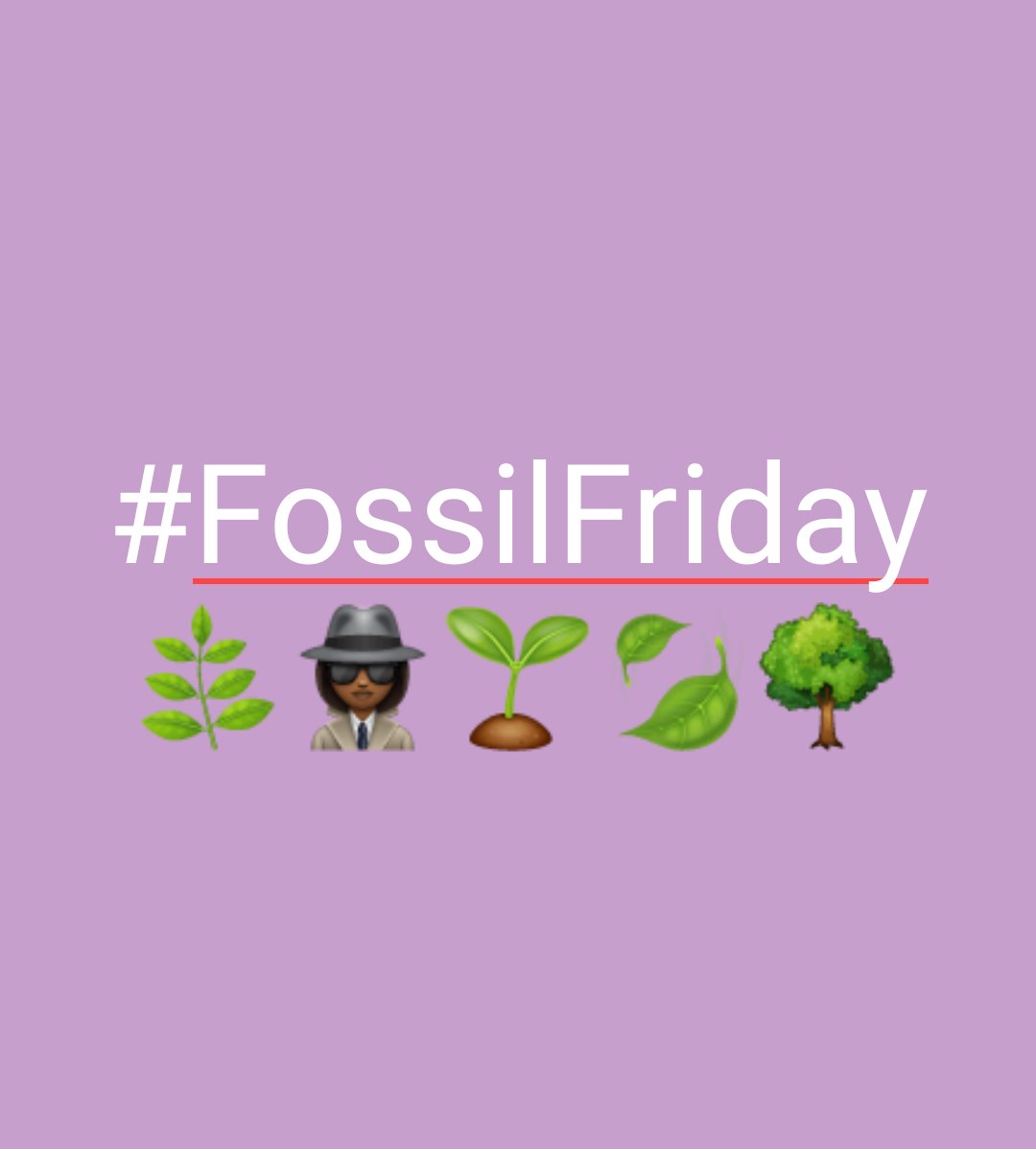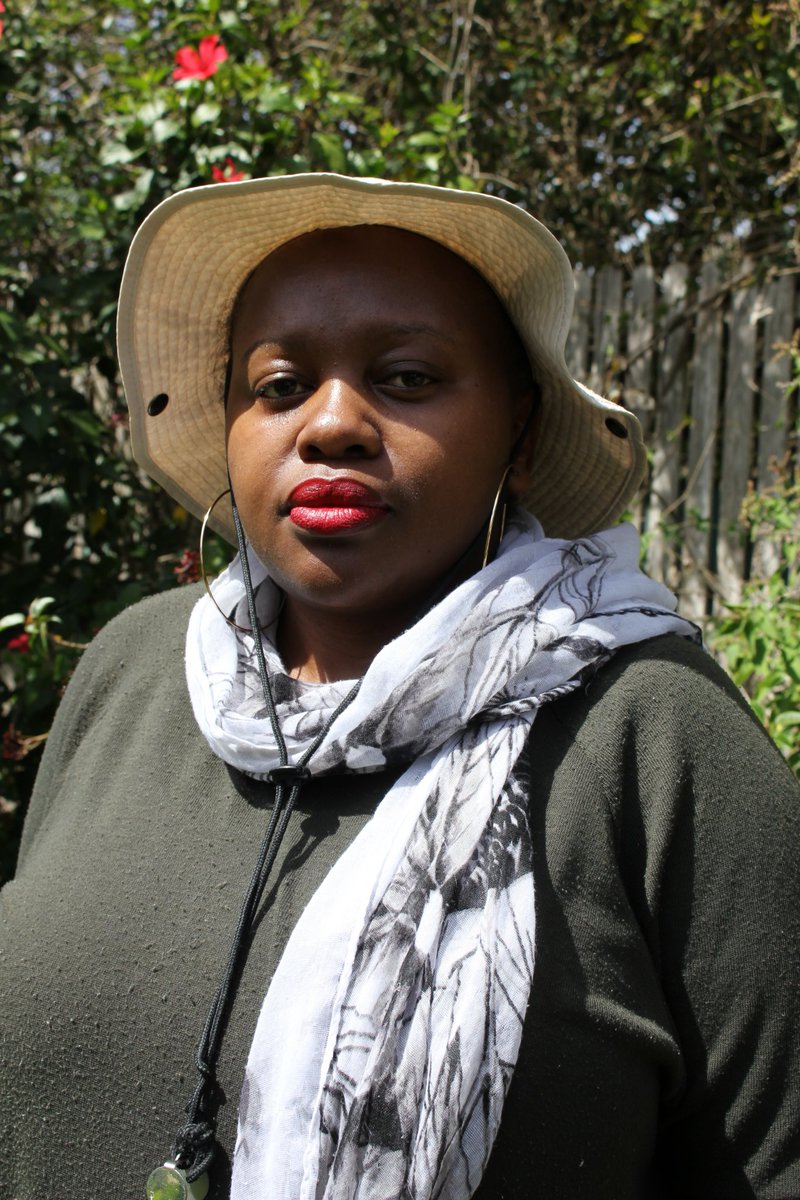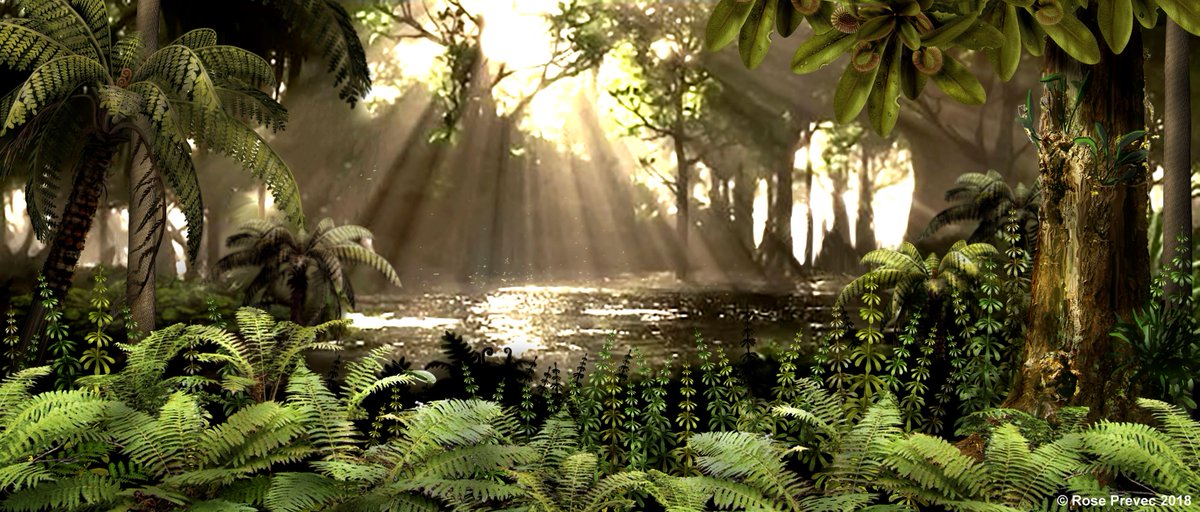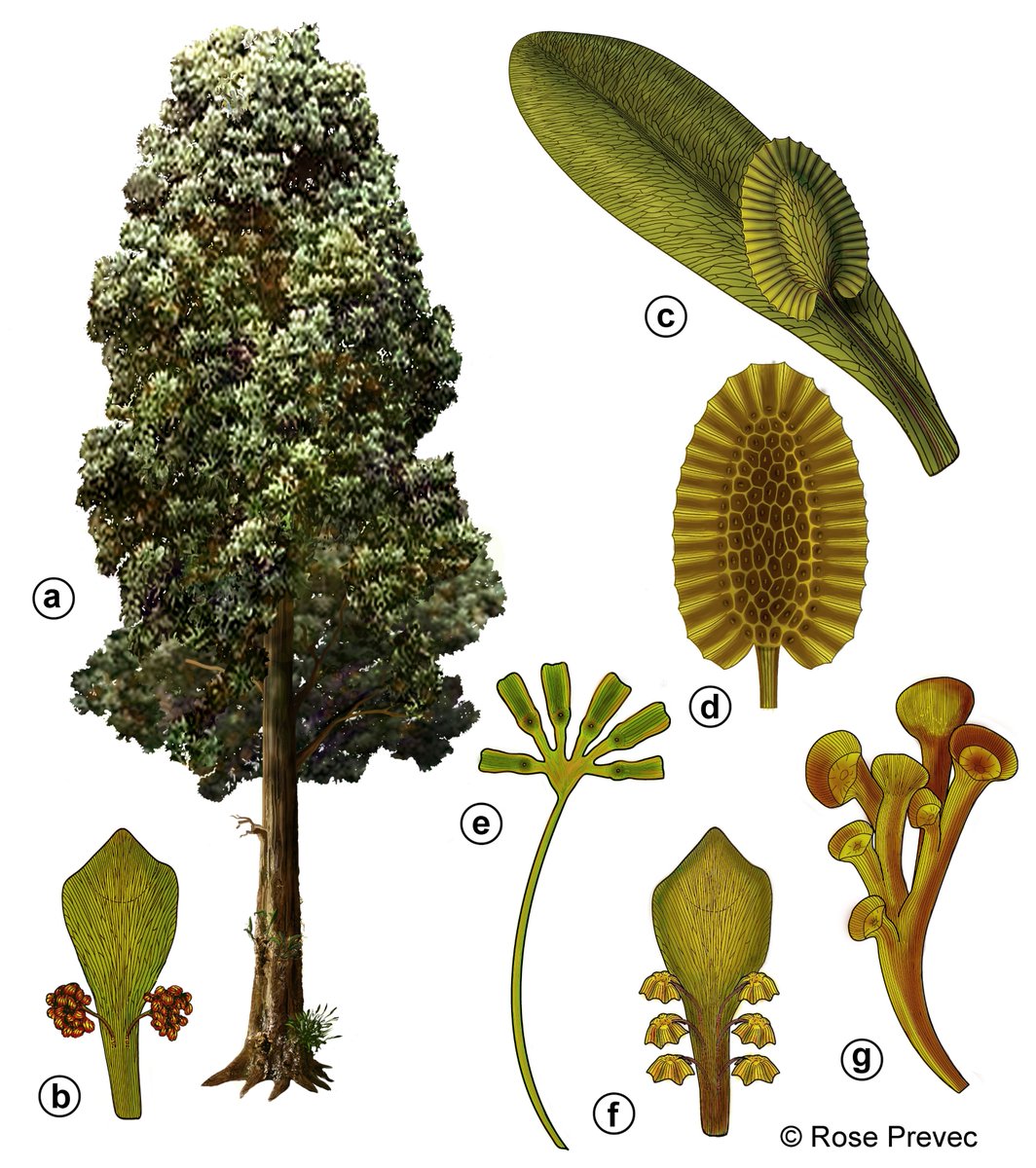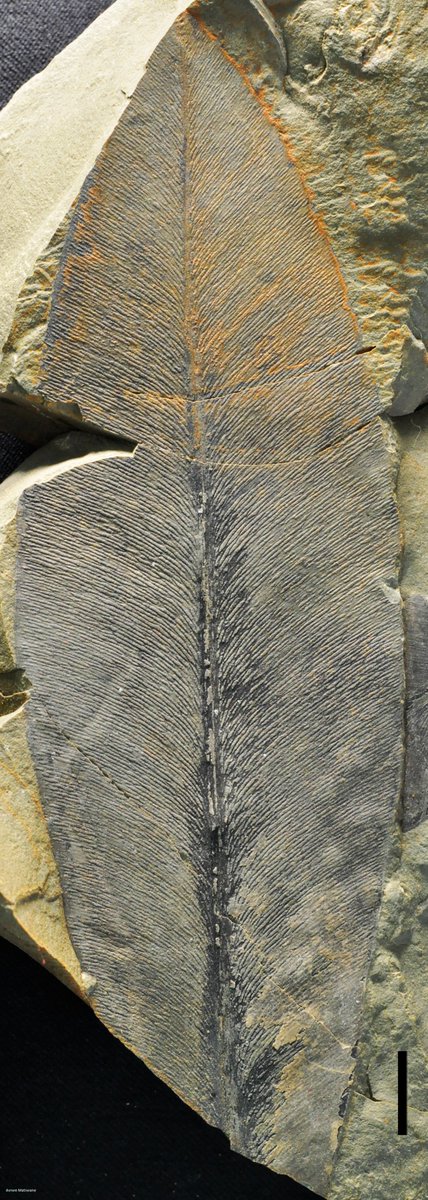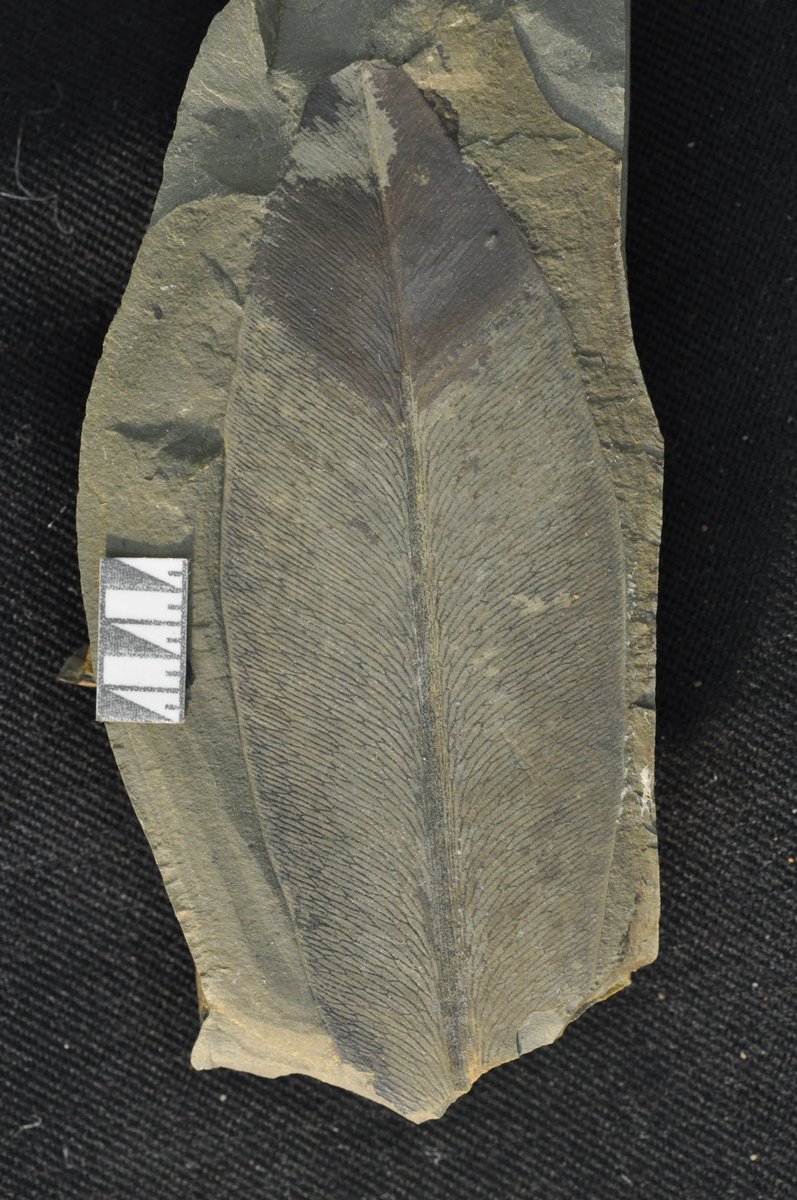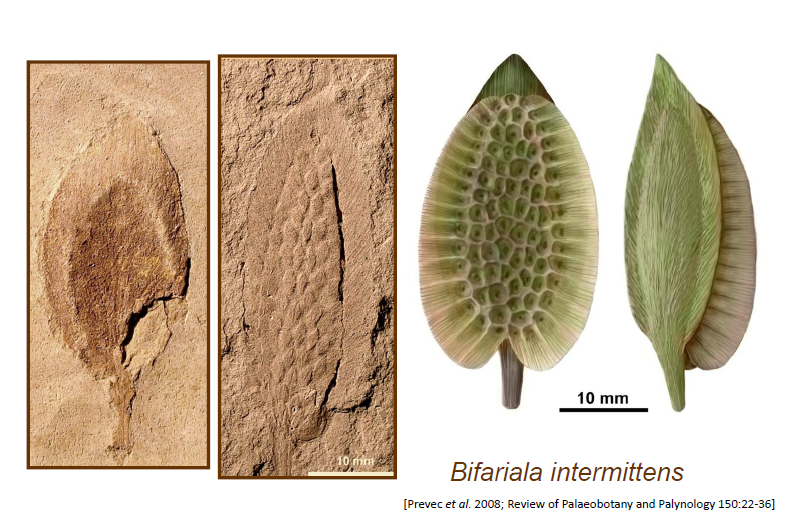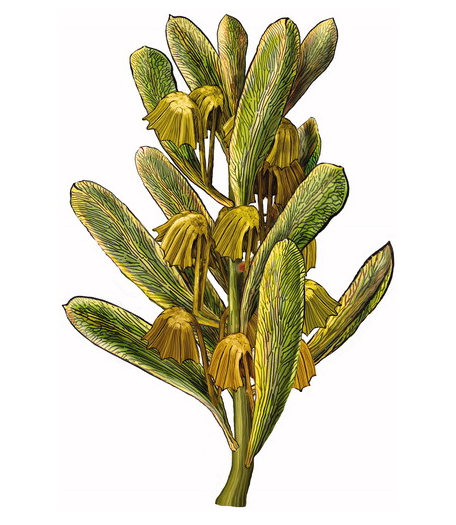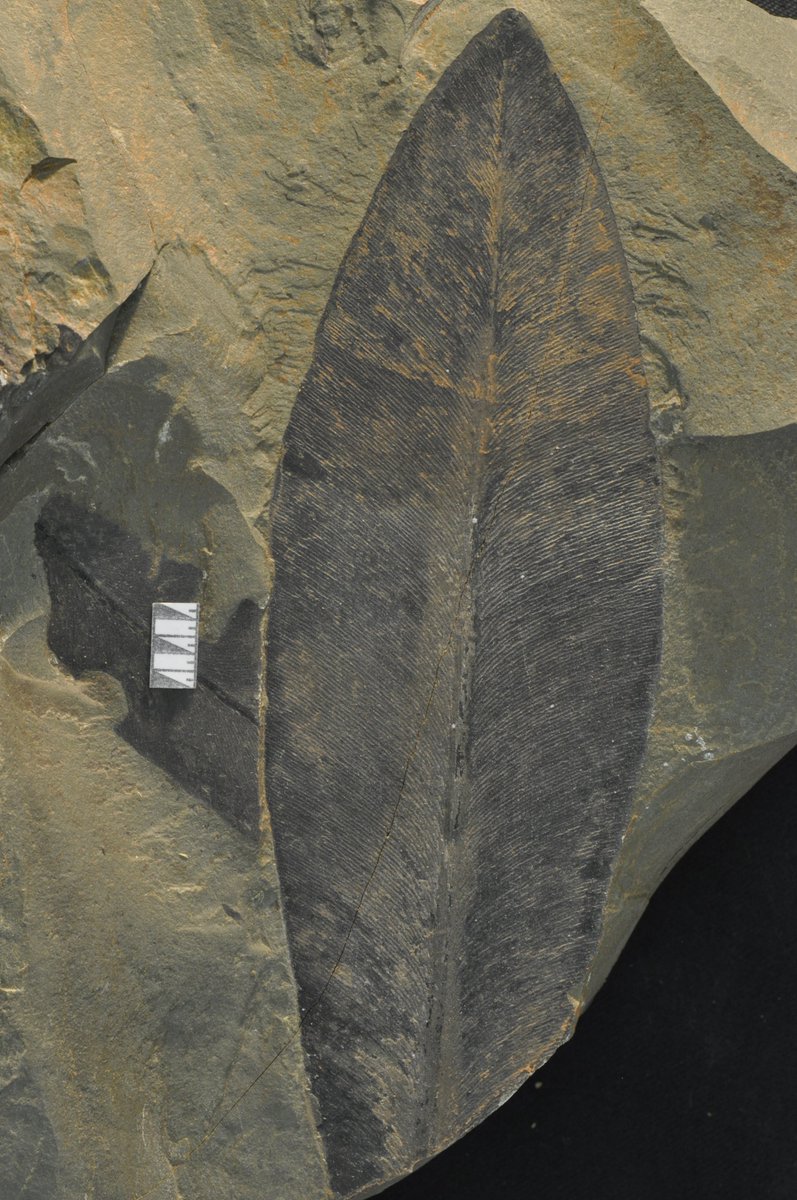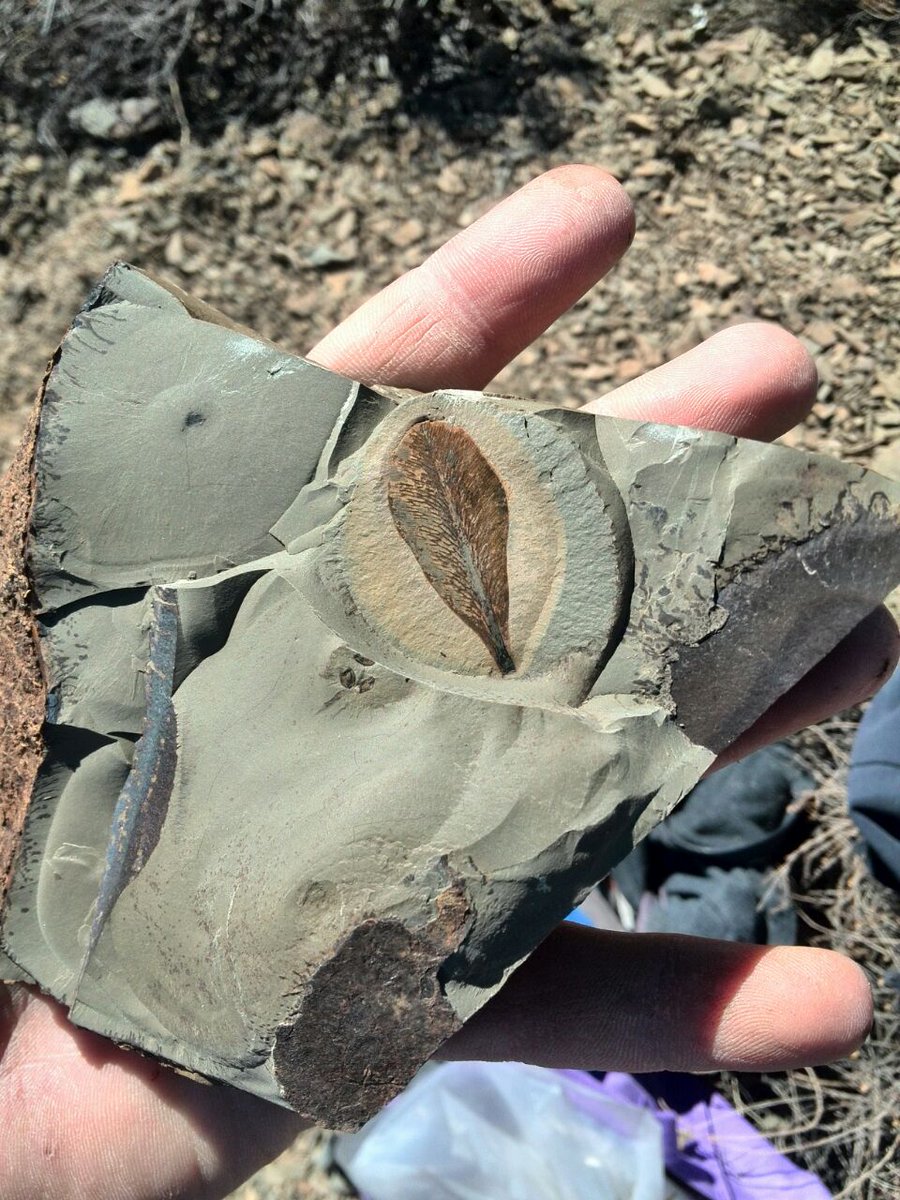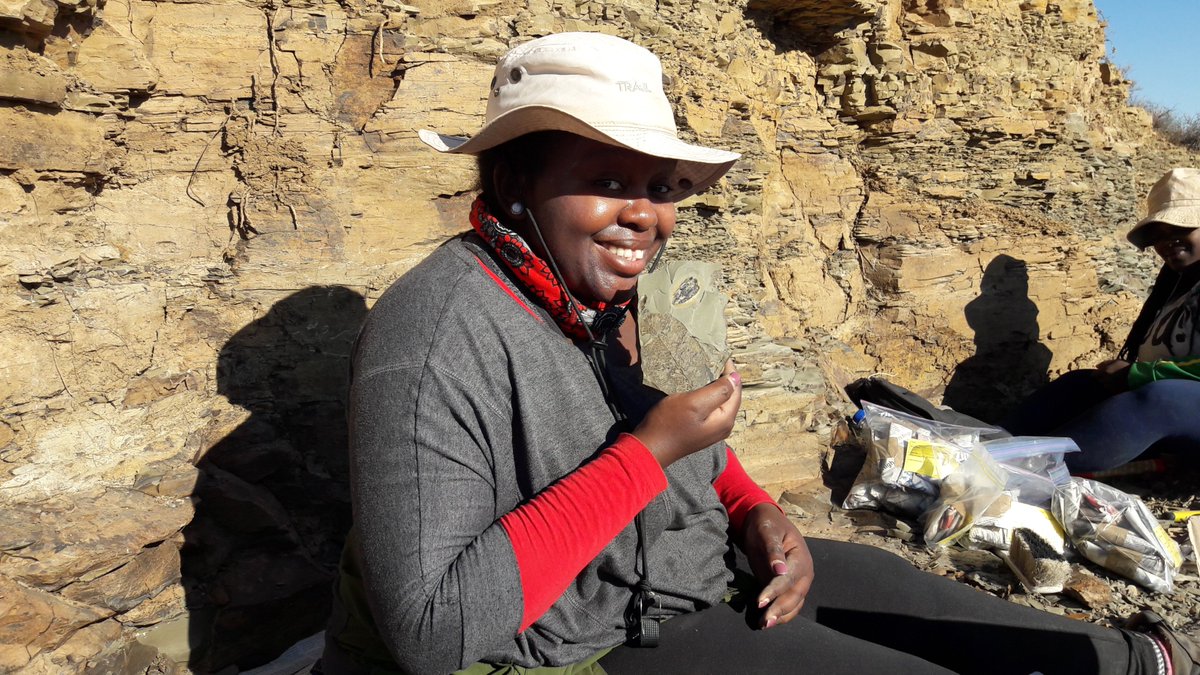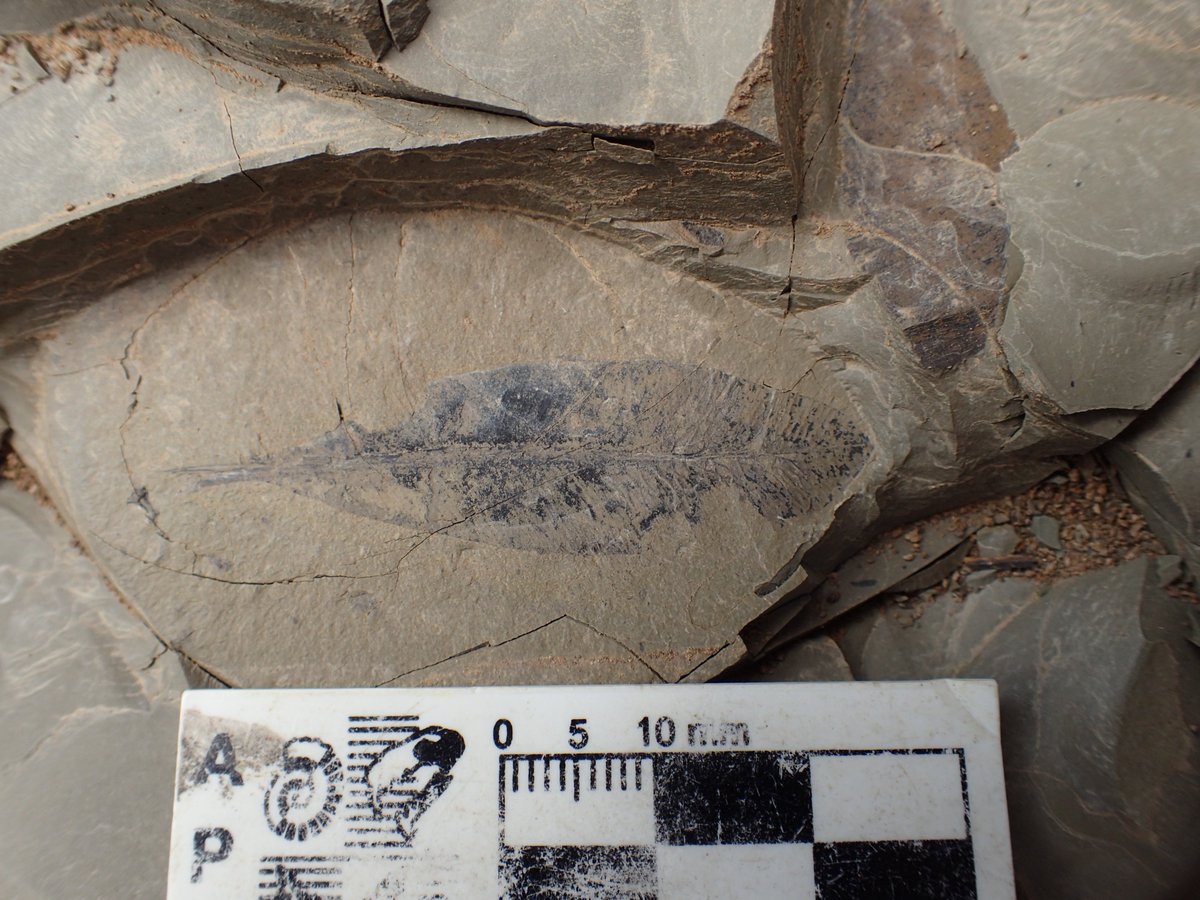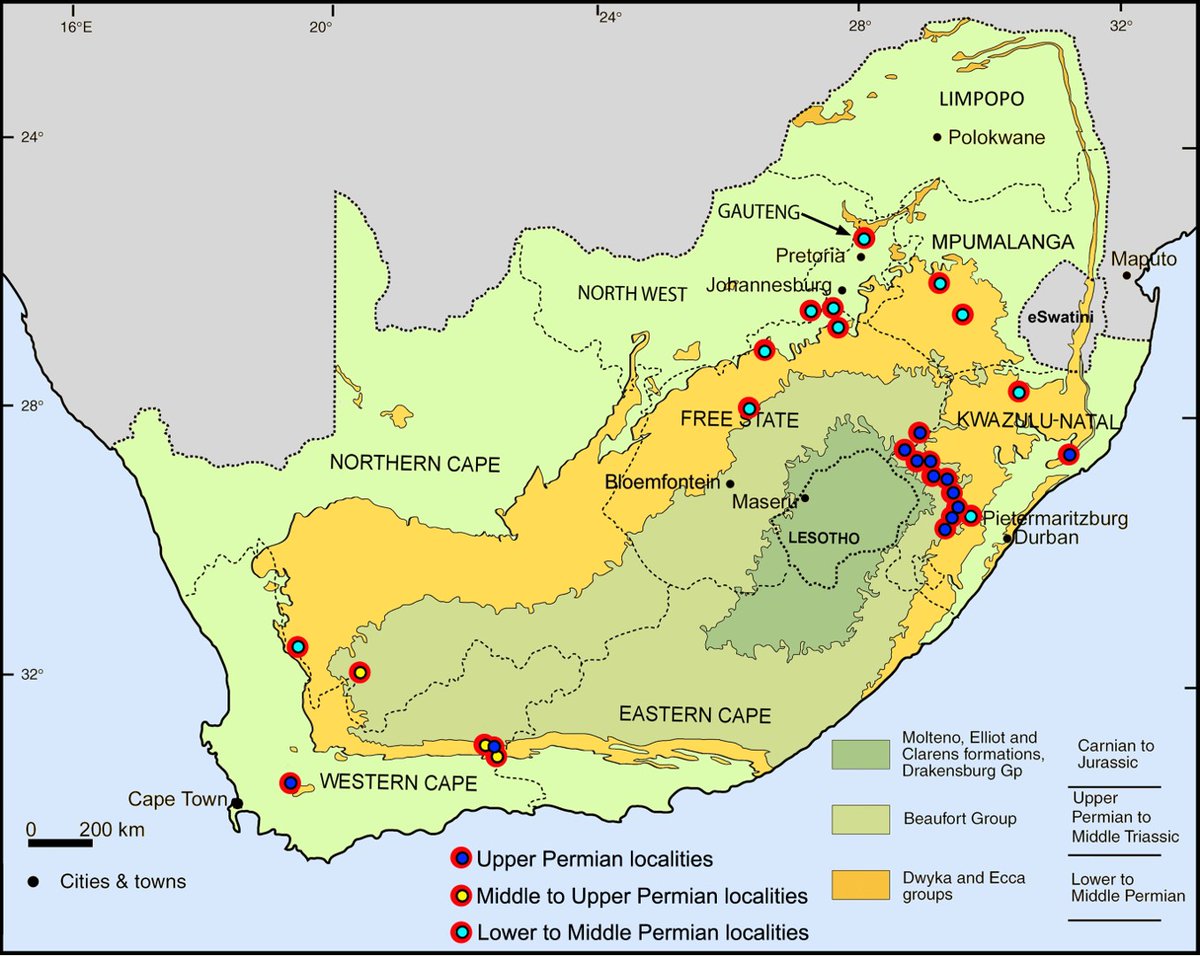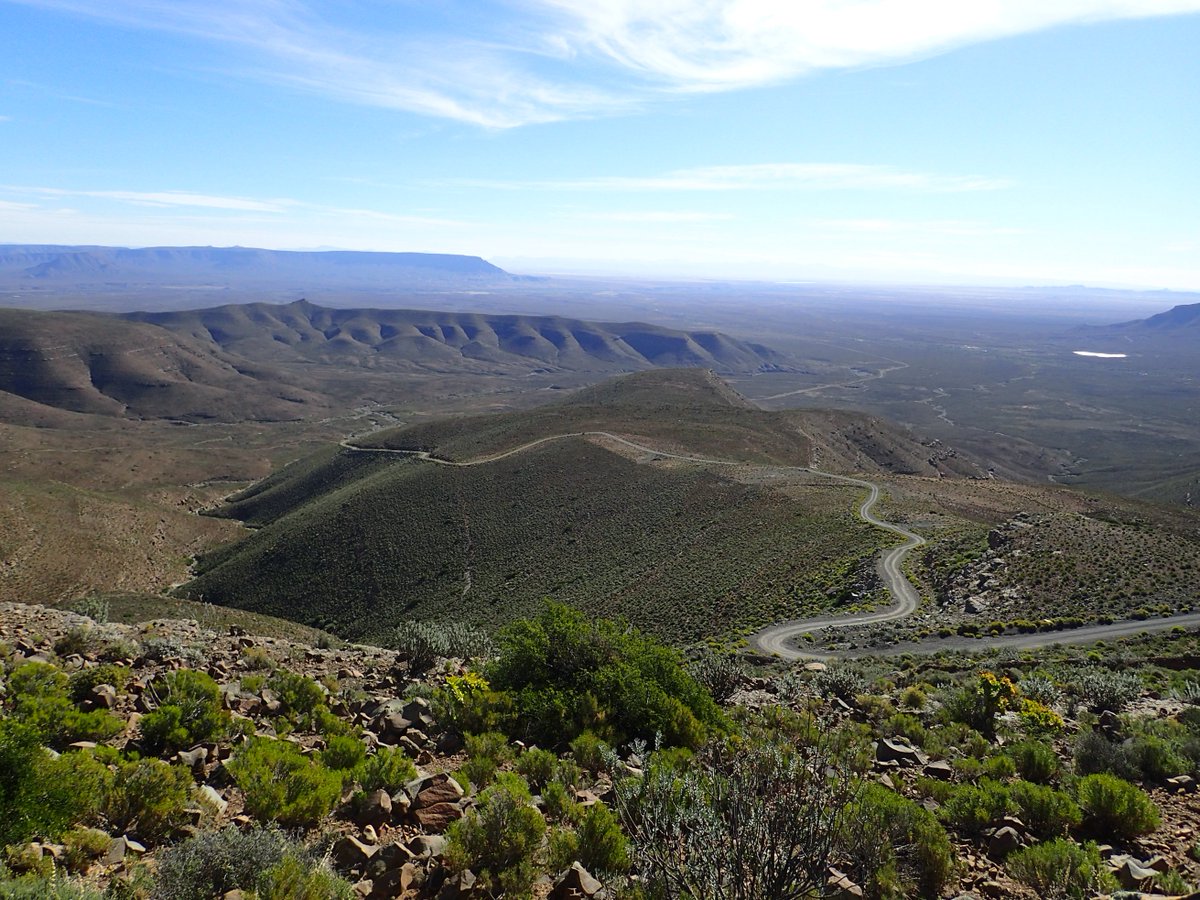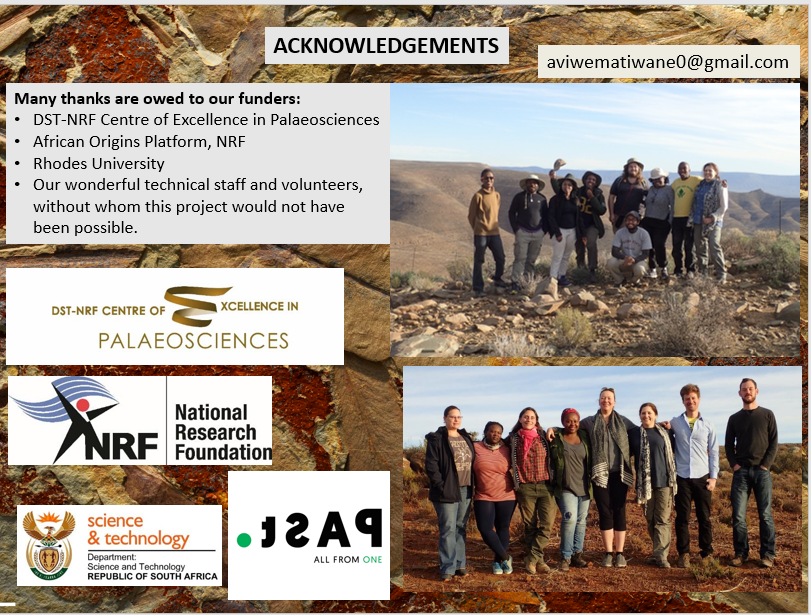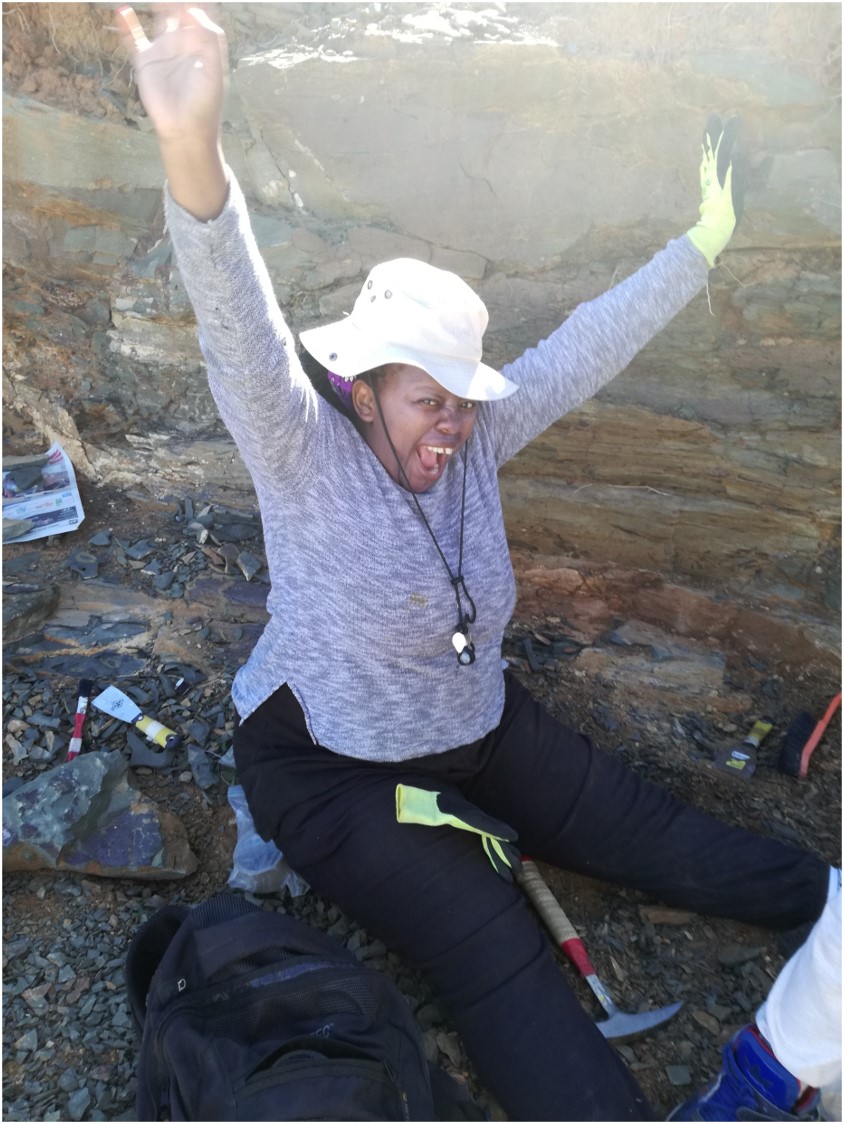#FossilFriday The Palaeobotanical version with your host, Aviwe Lwanda Nosipho Matiwane, the Plant Detective 
 #BlackInNature #scicomm
#BlackInNature #scicomm

 #BlackInNature #scicomm
#BlackInNature #scicomm
Let me first introduce myself: (1/n)
I am palaeobotanist from South Africa and I will briefly tell you about the 260 million-year-old plants known as glossopterids. My PhD research involves trying to find the best ways to name and describe these ancient plants. #BlackInNature
I am palaeobotanist from South Africa and I will briefly tell you about the 260 million-year-old plants known as glossopterids. My PhD research involves trying to find the best ways to name and describe these ancient plants. #BlackInNature
Setting: A reconstruction of a Permian (299-252 million years ago) Coal Swamp in the Karoo Basin of South Africa. I will mostly be talking about Glossopteris (I big trees). (2/n) #fossilfriday #paleoart
3/n: The name Glossopteris was first created by Brongniart in 1828.
Characterised by:
- ‘tongue’ shaped
- prominent midrib
- net venation
It is abundant as an impression/compression fossil flora in RSA. Glossopteris is synonymous with the Permian of Gondwana.
Characterised by:
- ‘tongue’ shaped
- prominent midrib
- net venation
It is abundant as an impression/compression fossil flora in RSA. Glossopteris is synonymous with the Permian of Gondwana.
4/n: Glossopteris was found all across the supercontinent known as Gondwana (Africa, Australia, Antarctica, South America, and India). Because it was found in all these places, it helped support the theory that all these landmasses were once ONE.*Kids, isn't that amazing?  *
*
 *
*
5/n: Glossopteris is of huge economical importance in South Africa as it forms our oldest coal deposits. #FossilFriday
6/n: Species identification has proven to be challenging relying on visual estimations of relatively plastic characteristics such as shape, length etc. A number of approaches to the classification have emerged over the years. Glossopteris taxonomy remains highly subjective
Reasons?7/n: The fossil record is highly fragmented,
few conclusive links between reproductive organs and leaf type, leaves are morphologically conservative, yet demonstrate a high degree of intraspecific variation,
leaves are found in far greater abundance than fructifications.
few conclusive links between reproductive organs and leaf type, leaves are morphologically conservative, yet demonstrate a high degree of intraspecific variation,
leaves are found in far greater abundance than fructifications.
8/n: Fertile organs are the most taxonomically informative, however, are very rare. Morphological studies of the fertile structures indicate that glossopterids exhibited a high degree of provincialism. Very few can be positively identified beyond the SA region.
9/n: Therefore, broadly applied Glossopteris leaf names are probably misleading. And has probably lead to false, biostratigraphic and phytogeographic conclusions.
Pic: A Reconstruction of Lidgetonnia, a Glossopteris fertile structure. (Prevec & Matiwane, 2018)
Pic: A Reconstruction of Lidgetonnia, a Glossopteris fertile structure. (Prevec & Matiwane, 2018)
10/n: Glossopteris leaves have the potential to be useful indicators of temporal change in the fossil record. However, there is a lack of consensus as to the best way to classify these leaves. Due to a general lack of faith that species can be consistently discriminated.
12/n: This is where I come in-
My study addressed these contentions by taking a morphometric approach towards species identification. It is an exploratory study to statistically identify which features offer the highest degree of useful n consistent discrimination between species
My study addressed these contentions by taking a morphometric approach towards species identification. It is an exploratory study to statistically identify which features offer the highest degree of useful n consistent discrimination between species
13/n: Current Study- 1)Assessed the pattern of morphological variation within two ‘populations’ of Glossopteris leaves. 2) Determined leaf morphological features - practically applicable discrimination between morphospecies. 3) Described a new flora from the Ouberg Pass (RSA).
14/n: In RSA Glossopteris floras are well represented in the northern and eastern parts of the Karoo Basin
Two localities were chosen (southern and eastern part of the basin) A new site on the Ouberg Pass (Northern Cape Province) and Kwa-Yaya (KwaZulu-Natal Province).
Two localities were chosen (southern and eastern part of the basin) A new site on the Ouberg Pass (Northern Cape Province) and Kwa-Yaya (KwaZulu-Natal Province).
15/n: Chosen to compare flora from different environments and time periods.
Ouberg Pass, middle Permian, meandering river systems. KwaYaya close to the shoreline and late Permain.
I won't go into too much detail.
Pic: One of my sites, Ouberg Pass.
Ouberg Pass, middle Permian, meandering river systems. KwaYaya close to the shoreline and late Permain.
I won't go into too much detail.
Pic: One of my sites, Ouberg Pass.
16/n: I have given you a glimpse into my project. There is more but that's it for today. I hope you have a better understanding of that my PhD research is based on. I am busy writing up. Join me again next week for more interesting pictures and info. 

17/17: Thank you so much for listening to my "Ted Talk". See you next week. Have a great day...you can also follow me on Instagram: @Lovely_bhedla and @palaeo_botanists
How rude...Questions or Comments?

 Read on Twitter
Read on Twitter